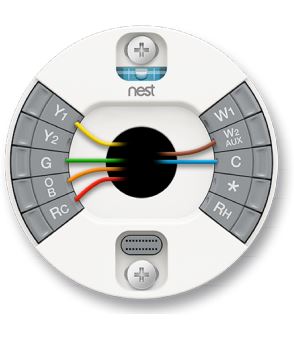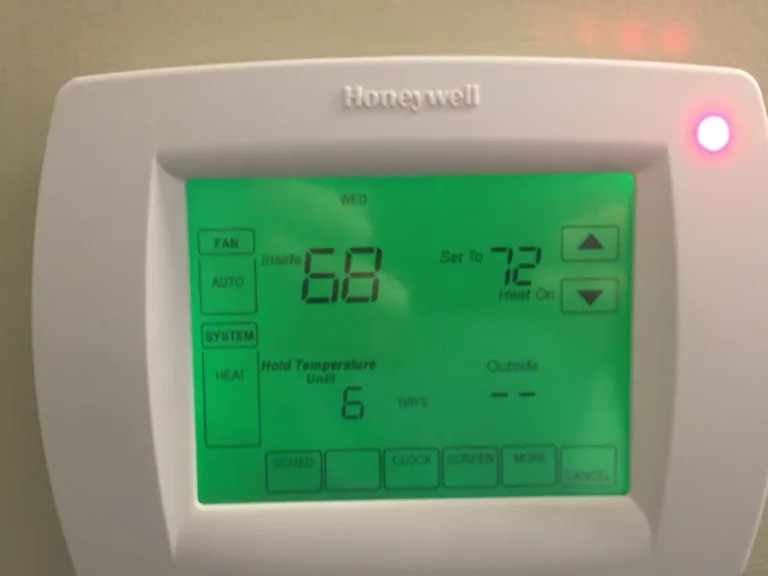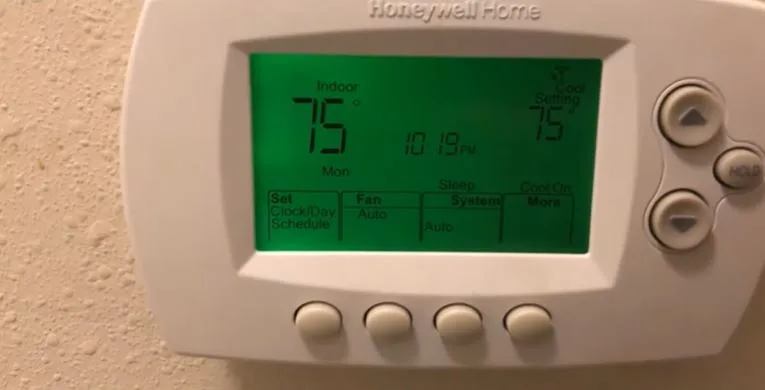How To Bypass A Thermostat For Cooling Or Heating
Bypassing a thermostat is one of the easiest ways to troubleshoot a furnace or an air conditioner that is not heating or cooling. If your AC or furnace is not working, it’s either the problem lies with the thermostat or with the HVAC system . So how do you know the source of the problem?
One way is to use a multimeter but if you don’t have a multimeter, another option is to bypass your thermostat to see if cooling or heating will be energized.
To bypass a thermostat for cooling when troubleshooting, put together the Y wire (yellow) and the R ( red) power from the transformer. If the system is not energized instantly, wait for the time delay( usually 5 minutes) to elapse.
To bypass a thermostat for heating in troubleshooting, put a jumper between W wire and the Rh. If you don’t have Rh, use the R wire instead.
To bypass a thermostat for fan, put a jumper between the G and R wire

So you can test cooling, heating or testing by bypassing. It. Let’s look at each of them in a little detail.
Step by step instruction on how to bypass a thermostat
Here are some of the steps to take before you begin the procedure.
Step 1: Turn off the power to your furnace/ air handler. A furnace switch will typically look like a light switch and be located on the side of the furnace. If you can’t find the switch turn of the HVAC system at the main circuit breaker
Step 2: Remove your thermostat from the wall. This is usually done by pulling the thermostat from the bottom but be careful some thermostat may have screws that you may need to be removed before pulling it off the wall.
Step 3: Once the display is off the wall you should see the base with wires attached to it. Here are just some of the most common wires you will see. See a complete thermostat wiring color code guide here
| Wire Wire and Designation | Function |
| G ( Green) | Controls the fan |
| Red ( Rc or Rh) | From from transformer |
| White (W) | Controls heating |
| Blue or brown wire | Provides consistent power to thermostat |
| Yellow (Y) | Controls cooling |
How to Bypass a thermostat for heating or cooling
To bypass a thermostat for heating or cooling you will need to use alligator jumpers. If you don’t have one you can use a wire stripped on its ends. And if you can’t find any wire you can use a paper clip or staples.
On some thermostat you might need to unscrew the terminals so you can insert a jumper wire between the wire the terminal connections
To bypass a thermostat for cooling jump the Y wire and the R wire. If AC does work, the problem is probably with the thermostat not the HVAC system.
FAQ
Is bypassing a thermostat safe?
Bypassing a thermostat for troubleshooting purposes is generally safe if done correctly and temporarily. However, it’s important to note that tampering with the thermostat or its wiring may void warranties and should not be a permanent solution. If you’re unsure, consult a professional HVAC technician.
Can bypassing your thermostat cause damage to my HVAC system?
Bypassing your thermostat itself should not cause damage to your HVAC system. However, it’s important to be cautious and avoid making any incorrect or improper connections during the bypass process which could blow up fuses.
What do the results of bypassing a thermostat indicate?
If your HVAC system functions properly when the thermostat is bypassed (e.g., the fan starts running), it suggests that the thermostat may be faulty.
Can I permanently bypass the thermostat?
Bypassing the thermostat should only be done temporarily for testing purposes. The thermostat plays a vital role in regulating temperature and ensuring efficient HVAC system operation.
If your HVAC system runs after bypassing your thermostat, you might want to rewire your thermostat or possibly have it replaced.
Final thoughts
In conclusion, bypassing the thermostat temporarily can help determine if it is the source of an HVAC issue.We hope this guide has been helpful to you. Remember, bypassing should only be done for testing purposes, and a faulty thermostat may require repair or replacement.
More resources


![Thermostat Wiring Color Code [Complete Guide]](https://thermostating.com/wp-content/uploads/2023/06/wire-color-code-768x395.jpg)

![Honeywell Thermostat Snowflake Blinking [Solved]](https://thermostating.com/wp-content/uploads/2023/06/snowflake-symbol.jpg)
![Ecobee Not Cooling To Set Temperature [Solved]](https://thermostating.com/wp-content/uploads/2023/01/ecobee-thermostat-1-jpg.webp)